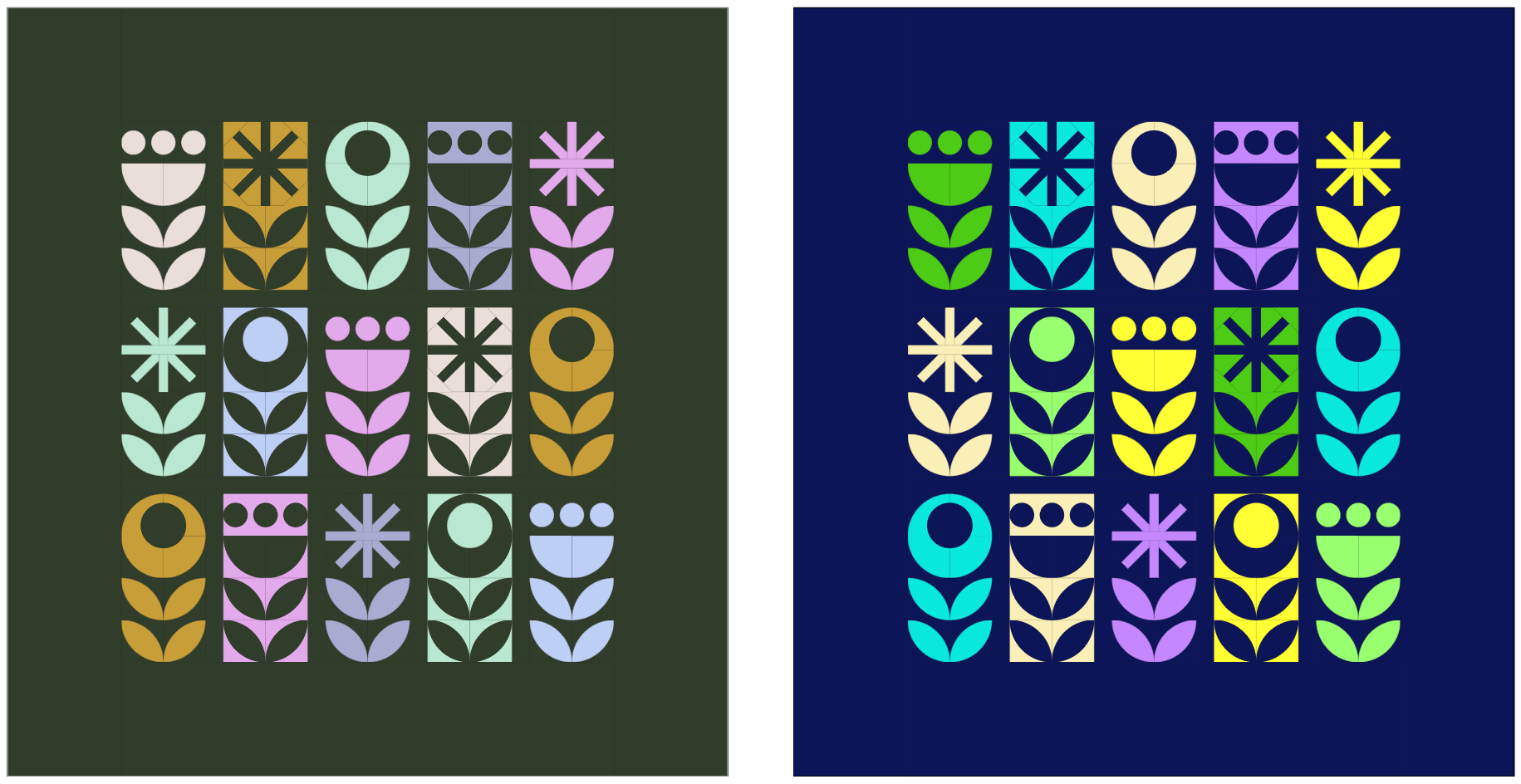Tall Poppy sewalong 1
Choosing your fabric
How are we all feeling after the holidays? Relaxed? Laid back? A little bit heavier (or maybe that’s just me!)?
I’m back in Melbourne after a break with family in Wagga, and I’m ready to get into the Tall Poppy slow sewalong! Nothing too strenuous to start – today we’re talking fabric, one of my absolute favourite steps in any quilt project.
For the original Tall Poppy quilt (pictured below) I mostly used Jen Hewett’s Unruly Nature for Ruby Star Society, purchased from Wendy at the Next Stitch. I used four different fabrics for each colour, which wasn’t always possible from Jen’s range, so Wendy helped me out by finding similar colours from other ranges to complement the overall design.
While Unruly Nature might not be available anymore, I did notice Wendy stocks Jen Hewett’s new range Verbena – many of those fabrics could also form the basis of a scrappy Tall Poppy (though I’d avoid the Trellis one).
Pattern perfect
I’m not going to lie, matching all the additional fabrics in the above version of the quilt definitely took time, but it’s not the only way to use patterns in the Tall Poppy quilt. Instead of using multiple patterns in a block you can get a similar effect using a single pattern for a poppy. I’ve mocked up a few in EQ8 to give you some ideas.
As you can see from these examples, the fabrics largely still read as a solid colour.
First up I’ve used Rise and Shine by Melody Miller. I love the idea of using those big, blowsy florals (the fabric in teal and green, and then again in pink and orange) to form the poppies. I’ve changed the colour placement slightly in this one as the large print didn’t work as well in the reverse blocks – this might be something you want to consider in your quilt.
This next one one uses Hampton Court by Karen Lewis. These small scale prints really suit the design – adding a good bit of interest without having to worry about anything too directional or needing fussy cutting…
I’ve been trawling through manufacturer sites all day today and have literally just noticed that Wendy has a fat quarter bundle of these on sale!
Last, a perennial range with Guinea Flower from Kaffe Fassett Collective Fabrics. Roman Glass is another collection that would work well. For this mockup and the one above, I’ve paired them with a solid, which is a good idea if you can’t find a non-busy print in the collection you’re using.
Of course, you don’t have to use a single collection either. Fabrics from your stash that work together is definitely an option. Each poppy unit uses approximately one fat eighth for the foreground and one for the background if you’re keen to shop your stash.
Simply solids
I couldn’t finish up without doing some mockups up in solids. There are so many options out there including blender fabrics that add that little bit of texture – for example Hole Punch Dot or Speckled from Ruby Star Society, the Phosphor collections from Lib Elliott, most of Alison Glass’ collections, Grunge Basics from Basic Grey, Chalk and Charcoal by Jennifer Sampou, just to name a very few.
My only advice would be to go with scattered patterns rather than anything that’s very directional.
The colourways at top right and bottom left are a nod to the Pantone and Kona colours of the year (Peach Fuzz and Julep respectively), while the bottom right was an extension of one of the MQG’s monthly palette inspirations in 2023.
My throw quilt
So what am I going to sew my Tall Poppy in? Well I’ve had this Stile collection from Liberty for years and have never found the right project for it, so now is the time! I’ve paired them with grass green for maximum wow factor and I’m going against what I just told you by using a directional print in the mix (at bottom left)… There’ll be some tricky cutting ahead for me.
Right now, I’m working with my colouring sheet from the pattern to figure out my fabric placement, since I’m also using an extra fabric than I have done in the mockups above.
Last, we need to talk templates. If you’re making your own templates you should cut them out from template plastic in the next couple of weeks ready for fabric cutting. If you’d prefer an acrylic set, Jenny’s templates are available here, or if you think there’ll be more curves in your future you can invest in the full set.
I’d love to hear about your plans for your Tall Poppy sewalong, or indeed see your plans over on Instagram with the #tallpoppyquilt hashtag. Hashtags are a bit hit and miss these days, so tag my handle as well @stitchandyarn.
If you have any questions, feel free to ask in the comments below.
I’ll see you again in a couple of weeks ready for cutting!







